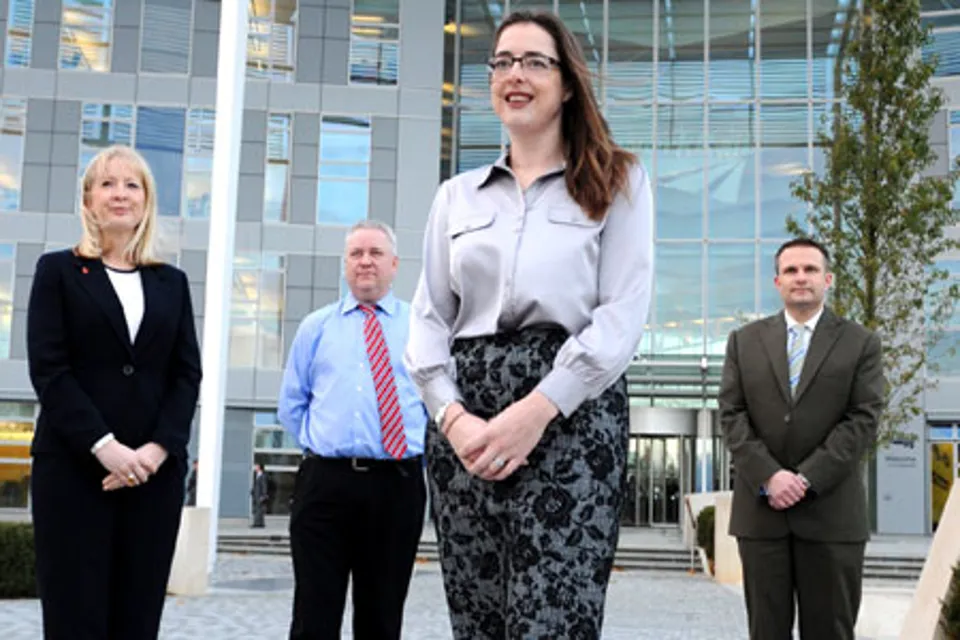The fleet has been praised by its insurer for the high level of incident reporting and given a rebate on its premium, which has been used to fund driver coaching for apprentices elsewhere in the business.
“It pays to manage any damage when it happens. We have visibility of everything and we can react to trends,” says Forrester.
“For example, if we have a lot of accidents in depots we can target them through driver coaching or changing the vehicle spec to include reversing sensors.”
The majority of Network Rail’s 1,500 company cars are job-need, which enables the fleet team to more easily focus on delivering value for money.
Choice is limited to “a 1.6 diesel of some variant”, says Forrester, irrespective of seniority.
There’s no pushback from drivers because of the benefit in kind tax advantages – cars are capped to below 110g/km CO2.
Osborn adds: “Our procurement process includes wholelife costs. We are good at taking a longer term view on cost, for example residual values and in-life costs; it’s built into the nature of what we do as an infrastructure business and a road vehicle is no different.”
With all the upheaval experienced by the Network Rail fleet over the past two years, is there anything the team would have done differently?
“There are lessons in improving our conversion specifications. Also, our change cycle which we compressed – a longer cycle would have helped the admin,” concedes Osborn.
“We are always looking to improve how we procure and match that to our customer needs and we are working with our suppliers and using their knowledge to work more in partnership.”
“We are moving from a one-size-fits-all but without losing the benefits of economies of scale,” she adds.
Creating a disposal strategy
Network Rail’s new fleet strategy contains one uncertainty: what happens to the vehicles when they come off fleet.
It is currently planning a robust remarketing strategy to manage the estimated 1,500 vehicles a year it needs to dispose of.
The first vehicles are due to return in a little over a year’s time.
The first step has been to listen to the needs of the 10 operating divisions which make up Network Rail. The options include handling the process internally or appointing a partner.
“We are researching the market looking at the best route, where we spend money to get vehicles up to condition, our reallocation policy, the pool fleet and short-term hire, and recycling of equipment,” says business support manager Leigh Goble.
Network Rail is building a new distribution centre for its entire business, rail and road, near Coventry.
This shared facility will give the fleet team options when it comes to reconfiguring vehicles or storing them ready for disposal or reallocation.
Emma Osborn says: “We intend to have a flexible strategy to meet changes in the marketplace.
Meet the senior team
 Emma Osborn, business manager – road fleet
Emma Osborn, business manager – road fleet
Osborn heads a senior team of four business support managers. She has been with Network Rail for 14 years and joined the fleet operation 20 months ago.
 Steve Duffy, business support manager
Steve Duffy, business support manager
Duffy manages manufacturer relationships and ensures that tenders result in the right vehicle for the right job. He also oversees the complex conversions. He joined Network Rail in 2004.
 Alan Forrester, business support manager
Alan Forrester, business support manager
A 25-year fleet veteran, Forrester looks after compliance, risk and safety for the fleet, and is the company’s O-Licence holder. He has been with Network Rail since 2002.
 Emma Day, business support manager
Emma Day, business support manager
Day handles the fleet management contract and team communications for both drivers and budget holders. She joined the Network Rail fleet operation in October 2011.
 Leigh Goble, business support manager
Leigh Goble, business support manager
Goble focuses on future strategy, including telematics, vehicle disposal and distribution. He joined Network Rail in October 2011 after working in the supply chain at manufacturers, dealers and leasing companies.

















Login to comment
Comments
No comments have been made yet.